

As a foreigner from the other side of the world, I quickly found out that Japanese culture is very different from western culture. That’s why I decided to make this post, telling you about the things you should know before visiting Japan. Even after spending only five days here, I found out some things that you should keep in mind when walking through the streets of this Asian island.
I know, it’s difficult to set aside your own cultural bias and see things the way someone from an entirely different culture does. But isn’t that what makes it worth it?
Anyway. Here are 11 tips and tricks that are guaranteed to make your trip to Japan happen without any awkward moments.
Latest update: 15 May 2019
Even though the possibility of getting fined shouldn’t be your only incentive for not littering, you might want to hold on to your trash a little bit longer. Littering on the street will get you a fine of 30.000 yen (about €230/$270).
Similarly, smoking outside of designated smoking areas is very much frowned upon. If you smoke outside at a place you’re not supposed to, you’ll receive a fine of 1.000 yen (about €7,7/$9). It might not seem like a lot, but you’d still be paying more than you would have paid if you hadn’t smoked at all.
That being said, smoking isn’t prohibited in Japan, but it’s just very restricted. To me, it was funny how nobody smoked on the street, but people were allowed to light up a cigarette inside a restaurant or a bar.
My dad has been travelling to Japan for work since the nineties. He told me that it used to be nearly impossible to visit Japan as a foreigner who doesn’t speak any Japanese.
However, we quickly noticed that Japan is actively trying to attract English-speaking visitors. On a train ride, most major train stations are announced both in Japanese and English, some restaurants have an English menu and often have at least one waiter who knows enough English to take your order.
Even if the restaurant doesn’t have an English menu, you can still get a pretty good image of what you can expect through the pictures. Pointing at a picture and nodding at the waiter is more or less a universal thing, I’d say.
And if the menu doesn’t have any pictures, you can still use Google Translate to tell the waiter to surprise you and bring you anything (like we did on our first night in Osaka).
Outside of the culinary world, you can get away with guessing what everything says surprisingly well. If you’re looking at an information board, it’s easy to spot the prices of what you want to visit. Usually, they’re the only numbers on there. And yes, Japan uses the same numbers as western countries.
Yes, you’ll probably pay more for your flight than you would on a weekend trip to the next state/country over. However, Japan is not as expensive as many guidebooks and articles would have you believe.
If you budget your trip well and plan everything in advance, you’ll get to visit one of the most amazing countries on earth without breaking the bank.
In order to save money in Japan, here are some things you can do:

If your electrical outlets don’t look like this, your plugs won’t fit in Japan.
People from North and Central America should have no problem fitting their plugs into these outlets, but anyone who uses other plugs will need to get a plug adapter.
You should also note that the voltage in Japan (100V) is different from North America (120V) and Europe (230V). That basically means that your appliances might not work optimally when plugged into a Japanese outlet.
In most cases, this is nothing to worry about and your devices won’t be damaged. Just to be safe, make sure the label on your device says something like “INPUT: 100-240V, 50/60 Hz”. This means that it can be used and charged in every country (and it’s pretty common nowadays).
You can’t leave Japan without trying some of their wonderful local cuisine.
During my two weeks in this country, I ate many things that I don’t normally eat in Belgium, and I encourage you to do the same.
Food is one of the main expressions of culture, and why would you be travelling if not to get a taste (pun intended) of other cultures?
You can find some of my recommendations below.
Also, the crazy flavours of candy and chocolate are actually a thing. If you’re not going to try them in Japan, you might as well not come at all.

When we came home, my sister and I made candy that looked like sushi. Yes, we made candy. (Side note: it didn’t taste great but we had the best time making it)
Japanese waiters, or any other service workers, don’t expect to be tipped. They often see it as an insult to their service and might even refuse the tip.
As good service is considered to be the standard in Japan, they don’t see why tipping would be necessary.
No matter how customary it might be in your home country (yes, United States, I’m looking at you), you should probably refrain from tipping service workers. Whereas service workers in the States more or less depend on tips for their salary, Japanese workers are fairly compensated and they don’t need, much less expect a tip.
Anyone used to eating with a knife and fork could have a hard time getting food to their mouth in Japan.
I won’t explain how to use chopsticks in this blog post, but I will refer you to this article which explains it marvellously.
If you’ve never used chopsticks before, you may find it easier to learn using training chopsticks (they’re made for Asian kids, but nobody will care if they see you using them as an adult).
Although the Japanese government seems to be making efforts to attract English-speaking tourists, the common folk is still pretty bad at English.
I’m not saying they won’t understand you. I’m not even saying they won’t be able to have a basic conversation with you. But you really shouldn’t expect a lot more than that basic conversation.
Then again, you’re probably not in Japan to talk English. It’s all just a part of the charm of Japanese culture.

Bonus: you’ll get some laughs out of translations made with Google Translate (or its Japanese equivalent).
Wherever you’re staying in Japan, it’s very unlikely that you’ll need a rental car. Period.
If you plan on spending a lot of time in major cities, you’ll be fine using trains, taxis and your feet.
If you want to hop from one city to the next, I recommend using Japan’s network of high-speed trains, Shinkansen. Most Shinkansen lines are covered by your JR Pass, but I recommend booking tickets in advance. It’s not necessary, but at least you’ll be guaranteed a spot on the train.
The trains work like a charm. They’re almost never late because they’re operated by seven privately-owned companies (who work together in the Japan Railways Group). If they are late, the delay is announced and explained in other trains, which is more than can be said for other countries (not-so-subtle reference to how badly public transport in Belgium is organised: check).
Either way, the chances of you needing a rental car are pretty slim.
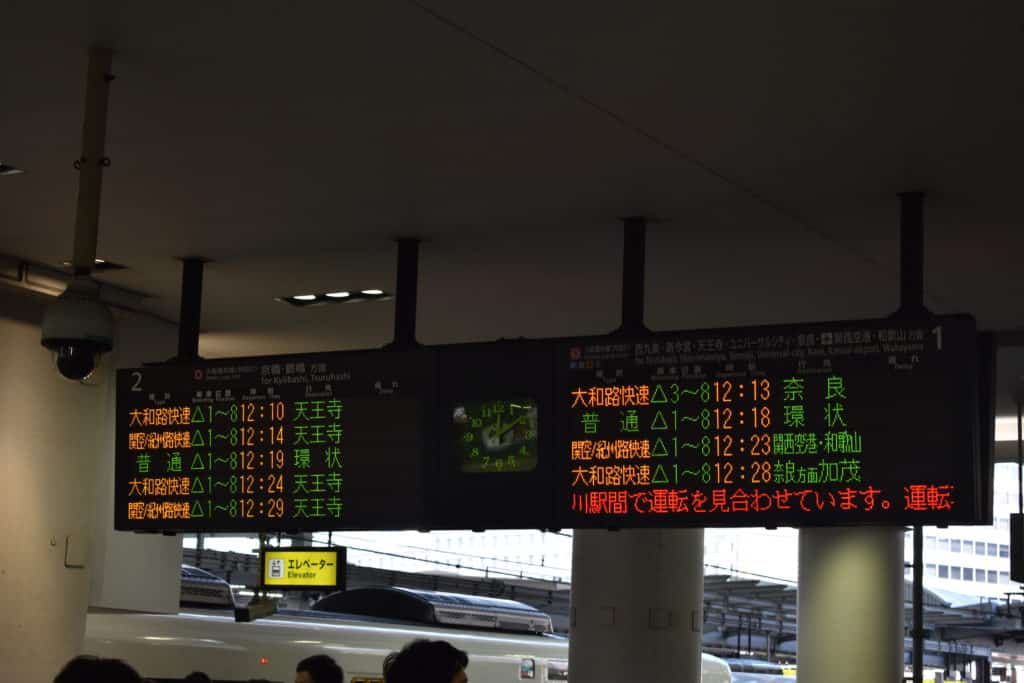
Yes, the trains are a pleasure to use and they’re very well organised.
And yet, to an outsider like me, it was still a bit confusing at first.
If you have a JR Pass, as I suggested before, you can pretty much take any JR train in Japan. (That’s why the JR Pass is such a good deal, duh.)
Where Japanese commuters are able to open the turnstile by scanning their card, you won’t be. Luckily, you’ll find a clerk nearby all turnstiles and they’ll let you through after you show them your JR Pass. Sometimes they don’t even want to put in the effort of actually looking at your pass and you can just walk through like that.
It might take you a few days to get used to how public transport in Japan works, but once you get it, it’s easy.
These were my things to know before visiting Japan.
Now, you’re all ready to explore the beautiful country of Japan. Enjoy your time there and be sure to send me pictures if you do visit.
Thanks for reading!
-S
PIN IT!



Collecting my stories on this travel blog has changed the way I travel. There’s no doubt about that. I’ve been choosing different locations and different travel activities, as well as making other small changes to my way of travelling.
Basically, I’ve been travelling all my life. I believe that my current love of travel is the result of dozens of small trips I took with my family, with friends and by myself. I’m also convinced that this love will only grow in the future and will lead me to even more amazing experiences.
My first big experience with travel was at four years old.
I went skiing with my parents and my sister in Austria. The thing is, I don’t remember a lot about this trip, but it was still a big, influential moment for me.
Since that trip, we went skiing almost every year until I was about seventeen. Our yearly family ski trips were a week of intense bonding and having fun plowing through the snow. I loved every single second of it, down to the sugar rush from all the candy we ate during the long car ride.
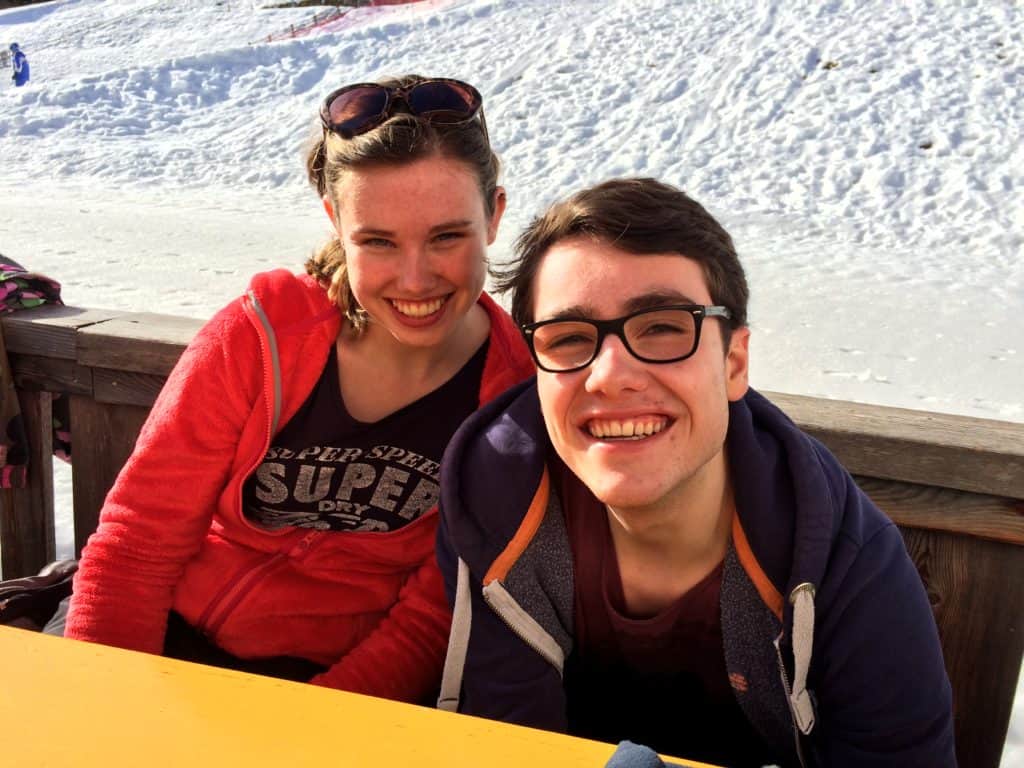
At this time, I wasn’t thinking about pursuing travelling as a career at all. I wasn’t looking at travel blogs or watching travel videos. I just knew that we went skiing every year, and I knew that it was going to be as much fun as each year.
As soon as my sister and I were about seven years old, our family travels became more than just the yearly ski trips.
The first big travel-related experience, beside skiing, was the first time I took an airplane to another country. One of the first times my family and I travelled together was a short trip to Sevilla (Spain), where we visited friends of our parents.
At the time, I didn’t speak a word of Spanish (Why would I?). Additionally, the Spanish are notorious for not being the best at English. As a consequence, the entire trip was quite confusing for me, as I had to rely on my parents to understand what was going on.

Other than that, I loved it. I loved eating boquerones with my head in the air, I loved eating the fruit from my mom’s sangria (and thinking I was drunk) and I loved the feeling of sunshine on my face.
Since then, we’ve had many of these small family trips during the summer. Some destinations that spring to mind are London, Paris, Porto, Venice and southern France.
For me, the big turning point between being a family-dependent traveller and being an independent traveller was my first solo trip to Dublin. Even in a non-travel-related context, it was a big moment in my life. It was the first time I spent five days in a foreign city, with nobody to keep me company but myself.
It was also the first time I could truly do everything I wanted to do. I didn’t feel forced to do things I wasn’t really feeling up to. That’s why my trip to Dublin sparked my interest in solo travel.
I started getting more serious about travelling when I went to university in 2015. Beside summer vacation, I only had one week where I didn’t have any classes and I didn’t have to study for my exams. And I wanted to make that week count.
I started blogging in January 2017 and my first blog post was atrocious. I actually started blogging on the free version of WordPress, where you don’t get your own URL (which I do now). After a few days I quickly realised that I’d need to upgrade to the self-hosted version of WordPress and get my own web host.
Looking back on my first blog posts now, I feel it’s safe to say that my English and my storytelling skills have both improved drastically.
The first thing I really blogged about was my Dublin trip. As someone who was new to the travel blogging world, I was trying to find a niche for my blog. And I still am, honestly. That was one of the reasons why I decided to give solo travel a try. And I’m very happy that I did.
Recently, I’ve also become more intrigued by travelling off the beaten path. My reasons for doing this are very selfish. There is already an abundance of travel bloggers. It’s a very competitive niche and it’s incredibly difficult to get your name out there. I want to create interesting posts about things that haven’t been written about a lot.
This evolution in my travel style went hand in hand with the fact that I was starting to capture my adventures in short travel videos. I wanted to make unique, one-of-a-kind videos. After all, nobody wants to see another video of the Eiffel Tower and the Champs-Élysees. Today, I actually prefer making videos over taking pictures when I’m travelling.
In the last few years, I’ve become increasingly more excited for future travel opportunities. I strongly believe that starting my blog has played a big part in that.
I find myself browsing through flight comparison websites, googling possible travel destinations and reading travel blog posts about places that I had never even heard of.
Luckily, one of my best friends (with whom I’m going to Slovenia in September, by the way) is just as excited about travelling as I am. She’ll often just send me a video or an article about some destination we’re both thrilled to see.
By writing about my past experience with travel, I become more excited for future trips. Even just reading blog posts I’ve published in the last year and a half makes me ridiculously excited to be on the road again.
I want to take every opportunity I get to travel. I don’t want to waste any time because I won’t be this young forever. Life is passing me by, and every time the sun goes down is another day I could spend travelling.
A travel blog won’t only impact your style of travelling in huge ways. There are some smaller ways that are harder to notice in which my travelling has changed.
This travel blog has changed the way I travel, and I’m sure it will continue to do so. If you’re looking for a reason to start a travel blog yourself, beside being able to keep friends and family at home updated about your travels, this is it. You’ll be more conscious and live in the moment while on the road.
Have you ever considered starting a travel blog? Do you already have one? Let me know in a comment!
Thanks for reading!
-S

I’m 21 years old and I want to move abroad. Really get to experience a culture that is different from the one I grew up in. I realise those are bold ambitions for someone who hasn’t even graduated university yet, but that’s just where I stand at the moment.
Latest update: 29 November 2018
My four months in Salamanca were some of the best months of my life. I met incredible people, experienced things I never thought I would and it was generally just an amazing time.
If you’re still hesitating as to whether or not you should study abroad, do it. When you live in another country as a student, nothing is holding you back from living your absolute best life.
My semester in Spain gave me the confidence that I’d be able to survive in a foreign environment by myself. Even though I’m still just a college student, I feel ready for this chapter of my life.
Before I moved to Spain for school, I was very afraid that I wouldn’t be able to make any friends. My sister can definitely attest to that, as I actually asked her questions like “But how do you make friends?” Little did I know it would be as easy as it was.
Turns out that I actually love the excitement of starting over in a new city, with people you’ve never met before and countless places you haven’t been to. I want to feel that excitement again.
I do realise that most people who say they want a fresh start are dealing with some serious problems. The same can’t be said for me, as I have everything I need and want right here. Except the feeling of adventure.
I don’t want to be dying and realise I haven’t really lived my life. Life has a lot to offer and I don’t want to pass on the opportunity to experience it.
Have you ever heard someone say “You only regret the chances you didn’t take”? If you don’t take the leap of faith, you’ll always wonder what could have happened.
Even if you do go for it and it’s not what you expected, at least you can look back and sleep easy knowing that you gave it everything you had.
I want more than a nine-to-five job where I barely get to leave the office. I want to go out for hikes and explore the surroundings of my new home.
Of course, I do realise that the odds have it that I’ll get an office job as an expat anyway. However, an office job in a foreign country is still ten times more exciting than an office job at home. To me it is, at least.

I strongly believe that the only way to get to know a culture is to drown yourself in that culture.
After living in Spain for one semester, I still don’t feel like I know everything there is to know about the Spanish culture. As expats often live abroad for longer periods of time than that, I think it would be the perfect opportunity to enrich my life.
An expat will likely never be as integrated into the local culture as an actual local is, but that doesn’t mean it’s not worth a try.
I’ve talked about this before. And I’ll talk about it again.
To me, it’s extremely important to figure out what my comfort zone is. Where I’m most comfortable, where I don’t have any stress and where I can settle down. I want to know this because I want to break out of that comfort zone.
The only way to grow as a person is to handle things you have no idea how to handle.
Travelling and being abroad has a way of making you do things you never thought you’d be doing. Among those things might be the one thing you’re passionate about and you might want to follow that passion for the rest of your life.
I’m still trying to find my passion.
Of course, for every reason to move abroad, someone will come up with a reason not to do it. And of course, I do realise that life as an expat isn’t all fun and games. There are times when life will be challenging and throw things at you that you have no idea how to handle.
The truth is, I’m afraid to move abroad. But all that does is tell me it’s something worth pursuing.
Read more about why fear is a sign you’re doing the right thing.
The biggest drawback of moving to another country and starting over is that you have to leave your entire life behind.
Yes, you can make friends abroad. It might even be easier to connect with fellow expats because you both have nobody else. But the real problem is that your true friends will always live in another city, country or even continent. You can never just casually hang out with them and tell stories about people you both know.
When my time of leaving to another country comes, I’m convinced that a majority of my friends will try to convince me that we’ll stay in touch. Sadly, I just don’t think that’s going to happen.
I also believe that some of my loved ones (family rather than friends) will feel guilty for my leaving. They might think that they weren’t offering me enough adventure.
Family and friends, if you’re reading this, I love you dearly. However, I just don’t feel like I’m going to stay in Belgium for my entire life.
When I left for Spain, I was prepared to feel lonely and confused. And, to some extent, I wasn’t even close to having anticipated what I actually felt like.
It was a kind of “both sides of the spectrum”-deal. For the first few days, if not weeks, I couldn’t help but think “What have I done? I don’t belong here”. Salamanca was nothing like what I had expected and I wasn’t sure if I even wanted to continue.
However, after some weeks, as I got to know more and more people, I really started to find my place within the student community. I realised that every single one of the Erasmus students felt the same. I was one of hundreds in the same boat.
That being said, I’m not as afraid of being lonely as an expat because I went through that experience as an Erasmus student. Yes, I’ll have to get acclimatised to my new surroundings, but it’ll be more than worth it.
Again, this is not as big a fear as it is for some people, as I’ve never been that bothered by what other people think of me. However, for myself, it’s obviously much more pleasant to live in a community where you truly feel like you’re a part of it than to feel like an outsider all the time.
I know that it’s incredibly difficult for expats to fit in with the locals, because they’ll always be seen as outsiders. Nevertheless, there is a substantial expat community in most major cities where I’m pretty confident I’ll find my place.

In short, no. I’m not ready to move abroad. Then again, are you ever?
The main thing that’s holding me back at the moment – aside from the fact that I’m only 20 years old – is money. I currently don’t have a steady source of income and I don’t have enough money saved up to survive abroad for a few months before I can get settled.
However, I don’t want to put off my move abroad forever. As I said, there will never be a perfect time to do it so I’ll just have to suck it up and deal with the problems as they come up.
I’m going to go with the flow, take a leap of faith and see where this crazy thing called life takes me. Remember this blog post when I’m sharing my life story with you from Canada, Austria, Ireland or wherever I end up.
It’s ambitious, but damn it, what’s the meaning of life if not to chase adventure and follow your dreams?
Thanks for reading!
-S

When you’re travelling, the most annoying thing you could do is act like an obnoxious tourist. We all know the type: they’re unnecessarily loud, disrespectful and just plain irritating. The good news is that there are some measures you can take to prevent becoming this tourist without even realising it.
Honestly, respect and sensitivity go a long way. Chances are you’re already doing some of these things, but it’s always better to be on the more prepared side of things.
I got the idea for this article when I was thinking about my previous travels and I thought about what went wrong and what could have gone better. In most cases, one of those things was the group of annoying tourists messing up the holiday for people around them. That’s why I decided to gather all of my knowledge on this subject and write this blog post to try to help the international travel community get rid of them.
You know how it’s incredibly easy to pick out the tourists in your home city? Yeah. It’s like that everywhere. If you want to avoid being treated like a lesser person and falling for tourist scams, it might be a good idea to consider mirroring the locals’ behaviour.
One thing you have to be very careful of when acting like a local is that you don’t take elements of their culture and use them as, say, a fashion accessory. This phenomenon is called cultural appropriation and it’s actually a remainder of colonialism. It’s often seen as a very racist and offensive thing to do.
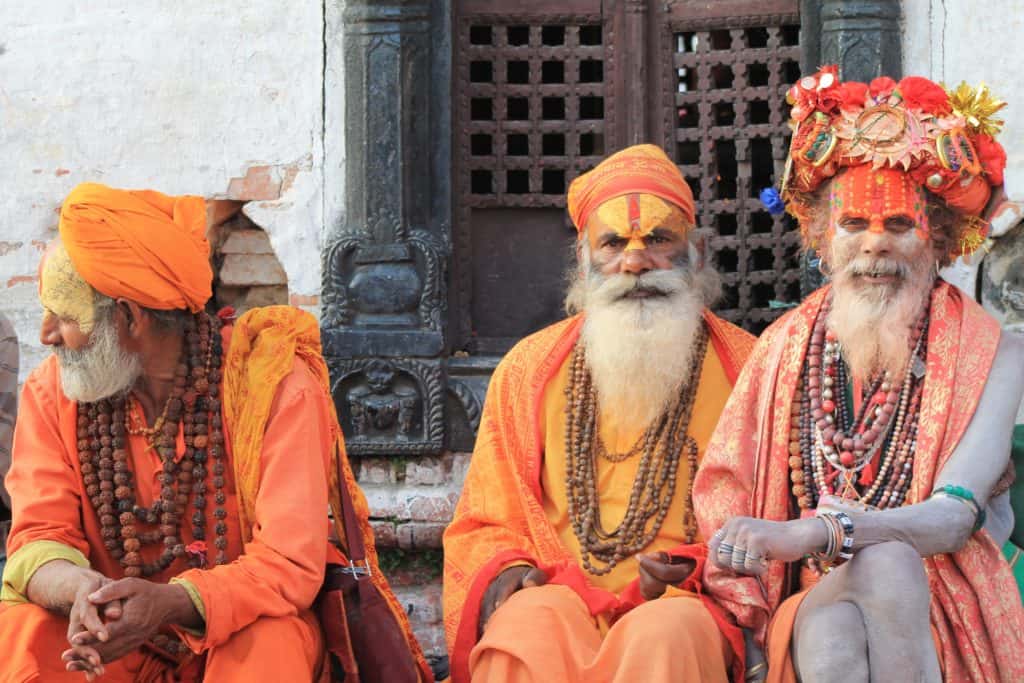
If you want to do what the locals do, you’ll obviously have to do some research as to what it is that they do.
Books are a fantastic way to find out what’s really going on. Read a book about your destination (no, not a travel guide – an actual book) or find books or stories that take place there. For example, if you’re travelling to Dublin, James Joyce’s Dubliners would be a terrific option.
Another thing you could do is look up how it would feel to live there. Just by googling “Moving to (Insert your destination here)”, you’ll come across hundreds of websites and articles like “15 Things You Need to Know Before Moving To …” and “What It’s Really Like To Live In …”. Often, you’ll also find a Quora question on the first page of Google where a local explains what the city/country/region is like.
You’d be surprised by how many people have no respect for the culture of the country they’re visiting.
If you really want to get to know a country, you’ll have to experience it like a local does. And you can’t do that if you don’t even respect them.
When you’re at the entrance of a buddhist temple that asks you to cover your shoulders before you enter, it’s not the place or the time to make a point. You’ll find that the staff will greet you with a smile if you follow the few simple rules that are imposed on you.
Also, please set your phone to airplane mode, lower your voice and remove your headphones and hats. It’s just common courtesy.
Don’t discard a way of living just because it’s different than yours. You can learn a lot if you’re open to learn about the way that other people live their lives.
In some countries, talking about politics is always frowned upon. In other countries, it’s okay in some circumstances. Some countries just don’t give a hoot.
These are things you should know about before boarding the plane and travelling halfway across the world. Even if you’re not usually someone who exclaims their opinions about everything to anyone. You might be talking to a local and slip up about something.
If you do find yourself in a conversation about politics, just respect the person you’re talking to. Don’t expect to change their mind, because you’ll be disappointed and they’ll be annoyed at you.
Accept the fact that you’re probably not going to come to an agreement and you may actually have a conversation that’s worth having.
The whole point of travelling is to experience other cultures and become more open-minded about other people. You can never achieve that if you’re stuck with stereotypes about them.
It might seem harmless to believe that all Brits are obsessed with their royals, but if you’re travelling to the United Kingdom, you could very well offend someone without even realising it.

One of the best ways to act like a local is to eat like a local.
Since the rise of the internet, it has been easy for anyone with a smartphone and an internet connection to find literally anything. Why not look up where locals eat in the place you’re visiting?
You can use a website like Spotted By Locals to get a really in-depth guide to visiting your destination as a local would; you can use an app like LocalEats (Android / Apple) to find the restaurants outside the city centre that locals go to; or you can even ask a by-passer where his favourite food truck is.

One of the easiest ways for locals to recognise a group of tourists is by their fashion choices. Think about it: the Hawaii shirt, the cargo shorts, the fanny pack, the bottle of water and the hat that never seems to fit.
Don’t be that person.
When travelling to a summer destination (such as Cabo or Mallorca), a bikini or a pair of swim shorts is the perfect attire to spend a day relaxing by the hotel pool. However, consider changing into something more appropriate should you decide to head out to the city.
When travelling to a part of the world that has a strong religious connotation (such as Southeast Asia), you should DEFINITELY pack something to cover your legs and shoulders for when you visit a place of worship. As a traveller, it’s your duty to be considerate of the local culture.
It goes without saying that you shouldn’t go around wearing clothes that have offensive language or images on them. You should also not be wearing anything that portrays overly religious or political subject matter – especially not in more conservative countries.
You don’t want to be that one person stuck in a pair of short shorts and a tank top when rain is pouring down from the sky.
Even if the weather report says that there are going to be clear skies throughout your entire holiday, pack a raincoat just in case. Mother Nature is very unforgiving and unpredictable, no matter how hard meteorologists try to convince you otherwise.
Not only is having a bulky, expensive camera around your neck a great way to get robbed abroad, it might also offend some people at specific locations (see also Put down your camera once in a while below).
Locals don’t usually walk around with a camera strapped to them, so neither should you.
As a traveller, you have to be conscious of the cultural differences between your country and the country you’re visiting. You have to do this without assigning a value to these differences. Your culture isn’t better or worse just because you do something differently.
The 1899 novel by Joseph Conrad called Heart of Darkness tells the story of Charles Marlow, an English captain for an ivory trading company. His boat travels to the yet undiscovered inland of the African continent.
Marlow is quite possibly the worst example for travellers. He goes to Africa with a mind full of prejudice and stereotypes. This story is located during the time of imperial colonialism, though. Of course, that doesn’t make Marlow a better person, but it does help to give the reader some context.
All I’m trying to say is: don’t be a Marlow.
Mass tourism is ruining places all over the world, period.
The only one of the original Seven Wonders of the World, the Pyramids of Giza, were originally built on a rather small plot of land, but because of mass tourism, it’s been transformed to one of the biggest tourist hotspots in the world.
Like the Pyramids, there are hundreds of other landmarks that negatively impact local residents. Please, do some research to find out how the attraction you’re planning to visit influences locals.
Don’t haggle.
It’s pushing people who live in poverty down the ladder even further. While you’ll likely only save a marginal amount of money, their livelihood depends on the products and services they’re selling. If a bakery tells you the bread you’re trying to buy is $2, you wouldn’t say “How about $1?” either, would you?
Again, it all comes down to having some elementary respect for the trade and skills of the person you’re buying from.
Oftentimes, travellers are so busy trying to capture the moment that they forget to live in it. I must admit that I’m guilty of this too.
Although a memory of a moment is much less tangible than a picture or a video, it’s still more valuable.
What I’m ultimately trying to say is that it’s okay to want photos, but don’t forget to actually be there and enjoy your time.
Personal space is a concept that’s highly dependent on culture.
South Americans generally tend to be closer to each other physically than people from Europe and North America.
These differences in personal space could even help explain some cultural stereotypes (stand-offish versus intrusive people).
In the end, it basically all boils down to this: respect the local culture and you’ll get respect in return. After all, you reap what you sow.
Don’t be afraid to indulge in the occasional tourist trap. If you try too hard not to act like a tourist, you’ll likely end up not even enjoying your holiday.
Has a tourist ever annoyed you at home? Why?
Thanks for reading!
-S
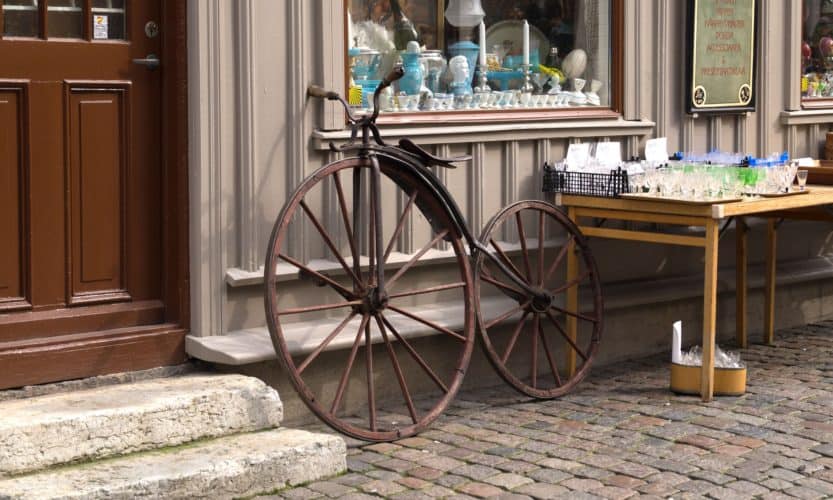
Göteborg – also known as Gothenburg – is too often overlooked in Scandinavian travel itineraries. However, as the second-biggest city in Sweden, it boasts over 800,000 inhabitants. So there must be some things to do there, right?
If Göteborg isn’t on your bucket list yet, you should put it on there. Here’s why.
Note: I got these insights from Margot, who was in this magnificent Swedish city between August 2016 and January 2017 for her Erasmus stay. You can take a look at her beautiful pictures on Instagram. Margot, if you’re reading this: thank you so much for giving me your inside tips about Göteborg and for allowing me to adapt and use the information you gave me for this post!
Without any further ado, let’s get right into it.
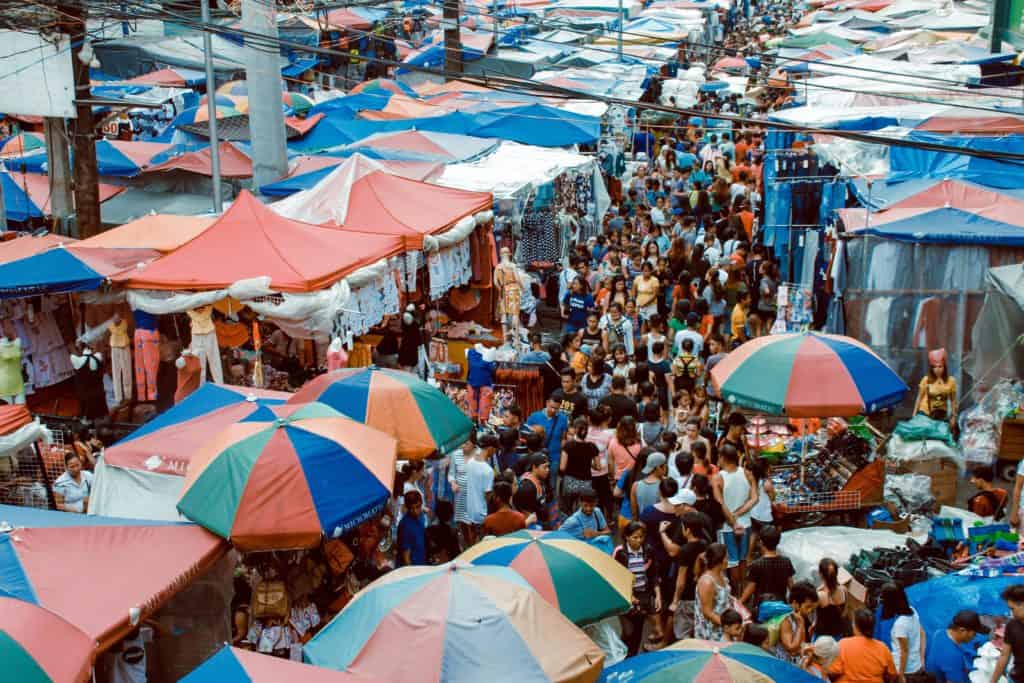
If there’s one thing the Swedish are good at – besides cinnamon rolls – it’s the flea markets. One way or another, it’s always much easier than you’d expect to find beautiful, original things at a great price.
There is a flea market where people sell things out of the trunk of their cars in Slottskogen between April and October. This flea market is known as the Drive-In-Loppis.
A suburb of Göteburg called Utby hosts the Utby Promenadloppis at the end of August, which is a lot of fun because the whole neighbourhood joins in and holds a little flea market in their garden.
On the last Sunday of May, there’s a megaloppis in Majorna, which is very much worth a visit as well.
Göteborg is preparing for its 400th birthday (yes, 400!). That’s going to happen in 2021. One of the festive projects that the city is working on is the construction of the Jubileumsparken. Right now, there’s already an outdoor swimming pool and a sauna which is available free of charge (and which is one of the architectural highlights of the park). If you want to spend some time in the sauna, you do have to make a reservation.
Unless you’re a big fan of ice hockey, you probably shouldn’t do this every week. However, it can be a lot of fun to attend an ice hockey game. The Swedish are obsessed with ice hockey and every game turns into a spectacle. Also, you’ll score a lot of bonus points if you can chat to the Göteborgare about the Frölunda Indians or the Växjö Lakers.
The bottom floor of the modern and pleasant Göteborg city library at Götaplatsen hosts a large collection of board games. There are chairs and tables for you to play a game of chess, Scrabble, or whatever tickles your fancy. Employees are there to help you and explain the rules to you. You can also do some good old console gaming in the same room. Fun fact: the library is open until 9 pm on weekdays (6 pm on the weekend). There’s a nice little cafe on the first floor for lunch and fika.
Liseberg is Scandinavia’s biggest amusement park. It’s especially fun to visit during the Christmas period and around Halloween. It’s decorated in a very retro way, which makes you feel like you’re in a Swedish film from the fifties.
Göteborg is not only for people who want to chill in the park and spend some time in a sauna, though. It also has many things, like museums and art galleries, to offer for those travellers looking for a more cultured trip.
This museum, which literally translates to “Art Museum of Göteborg”, has a very varied range of temporary modern exhibitions (think Bruce Nauman and Tove Jansson). There is also a permanent collection, which includes an entire floor dedicated to Scandinavian art. Inside of the museum, there is something called the Hasselblad Center, displaying different works of photography.
Alongside the museum, you can find Göteborgs Konsthall, where more modern art is displayed.
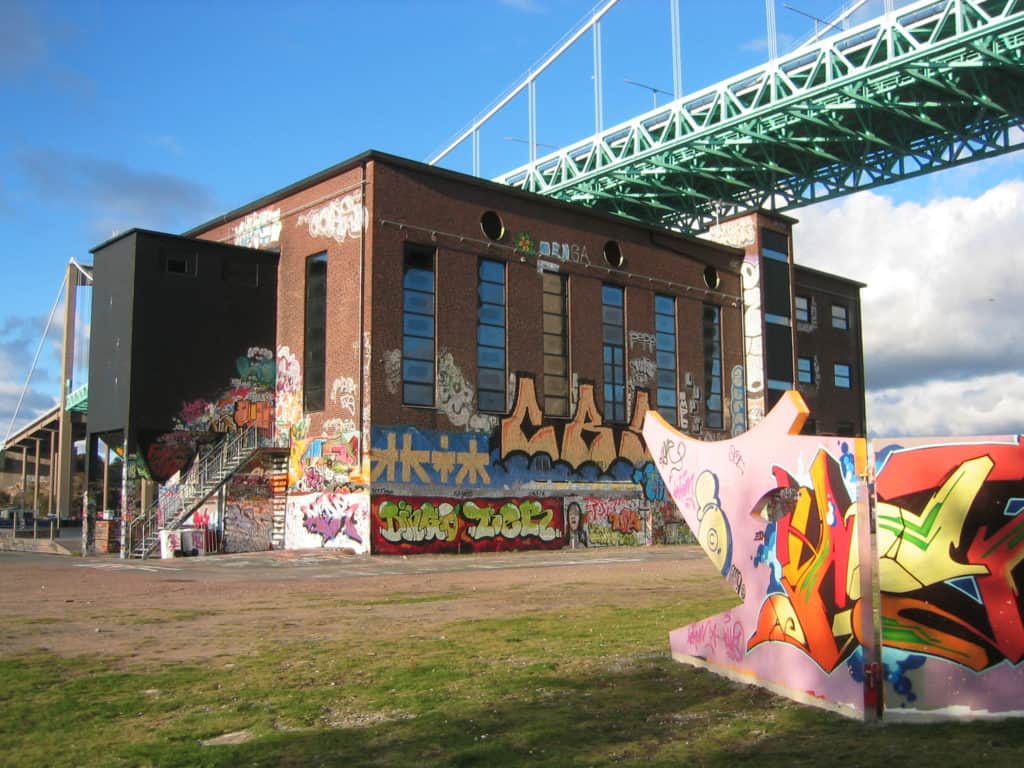
Photo credit: rodasten.com
Art gallery Röda Sten, located right under the green Älvsborgsbron bridge, is an art gallery that often displays modern art exhibitions about relevant, contemporary themes. Every week, the gallery also organises a free workshop for art enthusiasts under 26. There is also a restaurant and cafe inside – if there isn’t too much wind, the terrace is located perfectly along the river banks.
This museum is for anyone who wants to learn more about the history of Göteborg. Margot, for example, saw an exhibition about Göteborg as a city of music, and she learnt that the city used to be the jazz centre of Sweden and that Håkan Hellström is far from the only Swedish musician worth learning about.
Since eating, drinking and fika are very important to the Swedish people, the following list of cafes, restaurants, bistros and other cosy places to go will be quite extensive. As such, there will not be any explanation as to why they’re in this post, because they really don’t even need any explanation. The places are listed by neighbourhood.
Are you a nature enthusiast? Do you get energy from hanging out in green places and breathing fresh air? If so, Göteborg is the perfect place for you. It has plenty of nature-related things to do and visit. In this section, I’ll give you a selection of them.
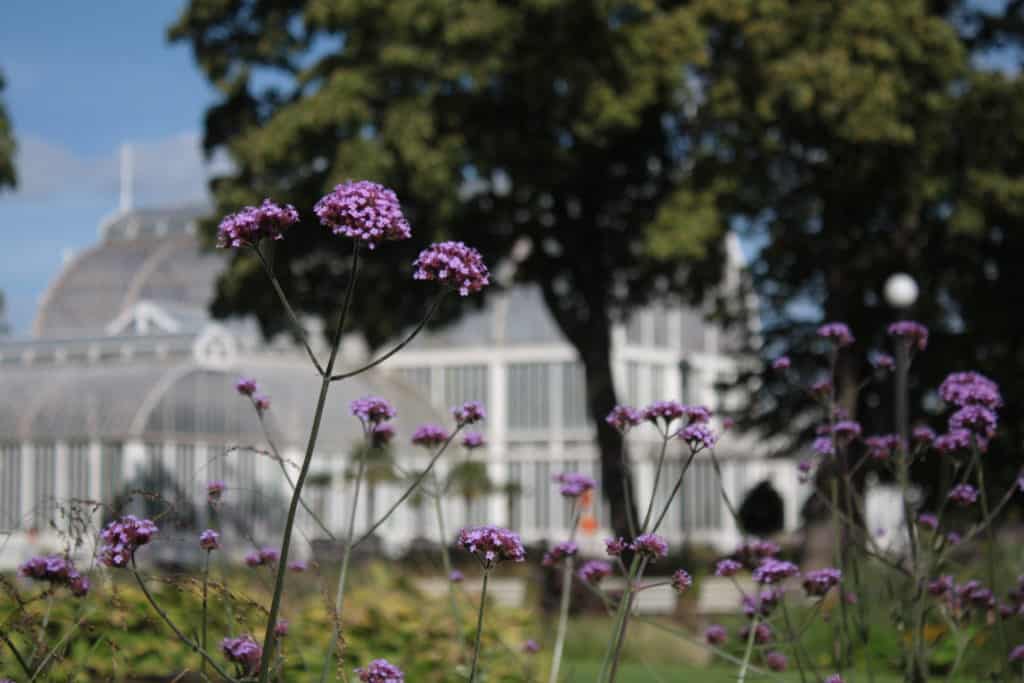
Photo by Margot
Palmhuset is an impressive 19th-century greenhouse right in the city centre. It’s incredibly popular among wedding planners and Instagrammers (seriously, just check the hashtag #palmhuset). In the central part of the greenhouse, you’ll find a stairway to an elevated platform where you can enjoy your home-made lunch in peace, surrounded by palm leaves. This platform can be a godsend on cold, rainy days when you just want to have an affordable lunch in an interesting location.
The park that houses Palmhuset is called Trädgårdsföreningen. Talk about a tongue twister. This park also has a rose garden, where you can find the Rosenkaféet, which also serves lunch and drinks.
Taking tram 11 heading toward Saltholmen will take you right to the quay where ferries go toward the Göteborg archipelago (Swedish: Göteborgs skärgård). The ferries are a part of the regular public transport network, so your season ticket, day ticket or three-day combo ticket should cover it. A regular ticket is valid for 90 minutes, which should get you a one-way trip, including the tram and the ferry, provided you have a little bit of luck with your timing. You can find more information about getting to the archipelago on the Swedish public transport website.
During the summer, you can take a trip to the archipelago to go swimming, but be cautious of the jellyfish. During the winter, you can go there to get some (really) fresh air. Styrsö, one of the main islands, has those pretty Pippi Longstocking houses (see pictures), as well as a vantage point called Stora Rös Café Öbergska at the Bratten quay.
Vrångö is a calmer island with nature reserves on either side (Norra & Södra Slingan), fit for short hikes with splendid views. On the east side of Norra Slingan, there’s a small sandy beach. Vrångö also has a vantage point called Lotsutkiken.
Fun fact: the inhabitants of this archipelago pretty much only move around using golf carts or motorised carrier cycles. And, if you’re lucky, you might even get to spot some wild animals.
Slottsskogen is Göteborg’s main park, featuring a free zoo that includes animals such as penguins and elk. Moreover, Slottsskogen is the best place to see the result of the Swedish paternity leave policy, as you can easily spot groups of men with baby buggies. A popular sport in this park is roller skiing, the off-snow equivalent of cross-country skiing (according to Wikipedia, at least).
Right across the street from Slottsskogen, you can find Göteborg’s botanical garden, entitled Göteborgs botaniska trädgård. It’s one of the biggest botanical gardens in Europe.
The gardens feature many small paths for visitors to explore, as well as thousands of species of plants to marvel at. Eventually, the paths will take you to the entrance of the nature reserve called Änggårdsbergen, where you can continue your hike. You could eventually make your way to Guldhedstornets Kafé, a fika place located on the top floor of a water tower that is still in use nowadays. This cafe, because of its high altitude, offers visitors a panorama view of the city.
At the east side of Göteborg is Delsjöområdet, a large nature reserve that is known for its many trees. Among local residents, it’s a popular place to go for a swim when temperatures allow it. Within this nature reserve, there are two lakes: Stora Delsjön and Lilla Delsjön. These lakes are easily accessible through public transport, although you’ll have to walk a fair bit to actually get there.
In the middle of Stora Delsjön, there is a rock right below the water surface. If you want to get an Instagram shot of you walking on water, this is your best bet. The two lakes are also the most accessible location to do some kayaking or hiking near the city.
Just like most other major cities around the world, Göteborg is full of history and interesting architectural concoctions. In the next part of this blog post, I’ll share some architectural places worth visiting with you.
The best vantage points to see the city itself are called Masthuggsberget and Ramberget. Both come with a considerable hike, but they’re definitely worth the effort. While both are located just outside of the city, Masthuggsberget is still a bit closer and will give you the most detailled view over Göteborg.
There are rocks around the church (Masthuggskyrkan) at Masthuggsberget, where you can take a walk and get a 360 degree view of the city.
Visiting Ramberget is very much recommended when there are fireworks along the river Göta älv. At that time, you’ll be able to see the entire skyline of Göteborg with fireworks in the background.
Skansen Kronan is also a popular vantage point due to its views and because it offers visitors an impressive look at the Oskar Fredriks kyrka (see below).
The most breathtaking walk in Göteborg has got to be the Göta Älv quay. Start your walk at Lilla Bommen (a very unique skyscraper that has been nicknamed “the lipstick”) and end in Maritiman (a free open-air museum with all kinds of old war ships), passing several landmarks on the way.
Those landmarks include Barken Viking (an old sailing ship), Göteborgs Gästhamn (old, red storage spaces where cafes and other hip spots can be found nowadays), Göteborgsoperan and some charming buildings with the typical copper-green towers.
Vasagatan is an avenue, named after king Gustav Vasa, filled with atypical but graceful late 19th century to early 20th century villas. At the junction of this street and Viktoriagatan, you will find a house called Tomtehuset, which roughly translates to “gnome house”. The house earned this name because of the mural paintings depicting gnomes as the first occupants of the house (an architect, a printer and a photographer).
In the middle of the street, there’s a walkway where you can go for a leisurely walk. If you do that, you’ll also pass the central university library, where you can go inside and take a quick look at the big reading room. The streets surrounding Vasagatan, such as Storgatan and Engelbreksgatan, also have some houses worth taking a look at. Outside the city centre, similar architecture can be found in the streets Berzeliigatan and Södra Vägen.
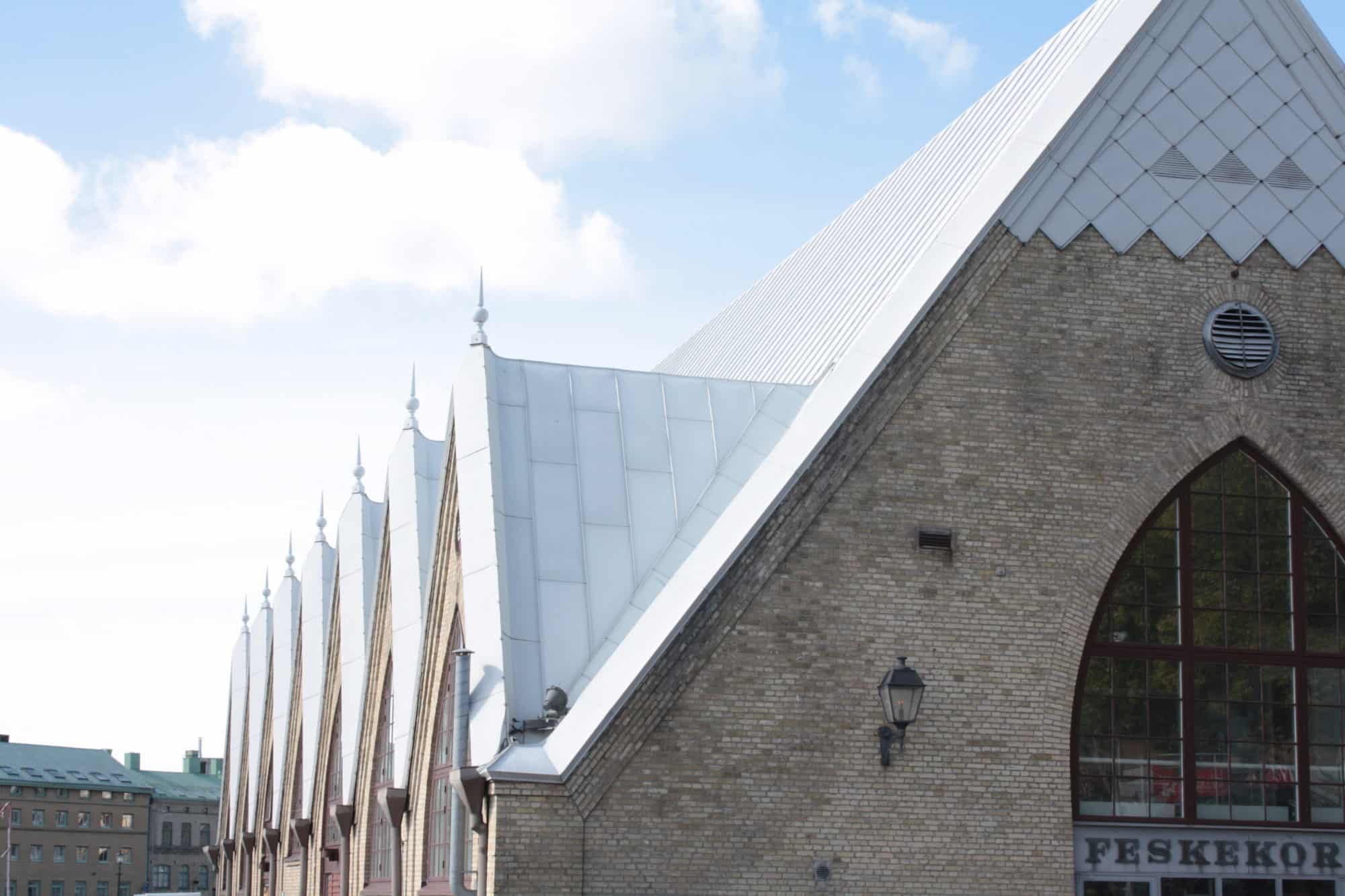 Feskekôrka is a word in Göteborg’s dialect, translated into English as “Fish church” – a very logical name for an indoor fish and shellfish market that looks like a church. It’s one of Göteborg’s most famous tourist attractions and it’s very likely that this is the only one that might ring a bell.
Feskekôrka is a word in Göteborg’s dialect, translated into English as “Fish church” – a very logical name for an indoor fish and shellfish market that looks like a church. It’s one of Göteborg’s most famous tourist attractions and it’s very likely that this is the only one that might ring a bell.
This is a beautiful church with a dark-red facade and copper-green and golden details. You’ll probably come along this church on your way to Masthuggsberget or you can see it from Skansen Kronan.
Göteborg is not only for architecture and nature enthusiasts, though. If you just want to find some good stores to hang out and buy some things, here’s a list of the best shops in Göteborg.
The most common shopping locations in Göteborg are without a doubt Nordstan (the biggest mall in all of Scandinavia, mostly featuring chain stores) and Inom Vallgraven (a larger area; the closer you get to Nordstan, the more chains you’ll come across). If you want to find stores that are less well-known to the general public, you might want to check out Magasinsgatan. For something between the two, you can probably get your fix in the streets between Östra and Västra Hamngatan.
For artisanal products, you’ll have to be in Kronhusbodarna (yellow houses around Kronhuset, Göteborg’s oldest building) and Haga (the old working-class neighbourhood; now a very touristy but convivial street with coffee shops and other stores). These neighbourhoods are great if you’re looking to buy souvenirs for friends back home (like winter sweaters and slippers).
Typical Swedish delicacies can be found in Saluhallen, the indoor market, or in one of the Kronhusbodarna, a candy store called Göteborgs Choklad & Karamellbutik.
Though Göteborg may have a lot to offer to its visitors, you might still want to take a look at the surrounding areas. That’s where a day trip can come in handy.
Marstrand is a small coastal city just north of Göteborg. Even more north are Fiskebäckskil, Lysekil and Fjällbacka, which might be nice places to combine for a day trip from Göteborg. It should take you about an hour to get from Göteborg to Marstrand using public transport.
Tjolohölms Slott is a castle located right along the coast, about 40 minutes south of Göteborg. Fun fact: this castle was used as a set for Lars von Trier’s film Melancholia.
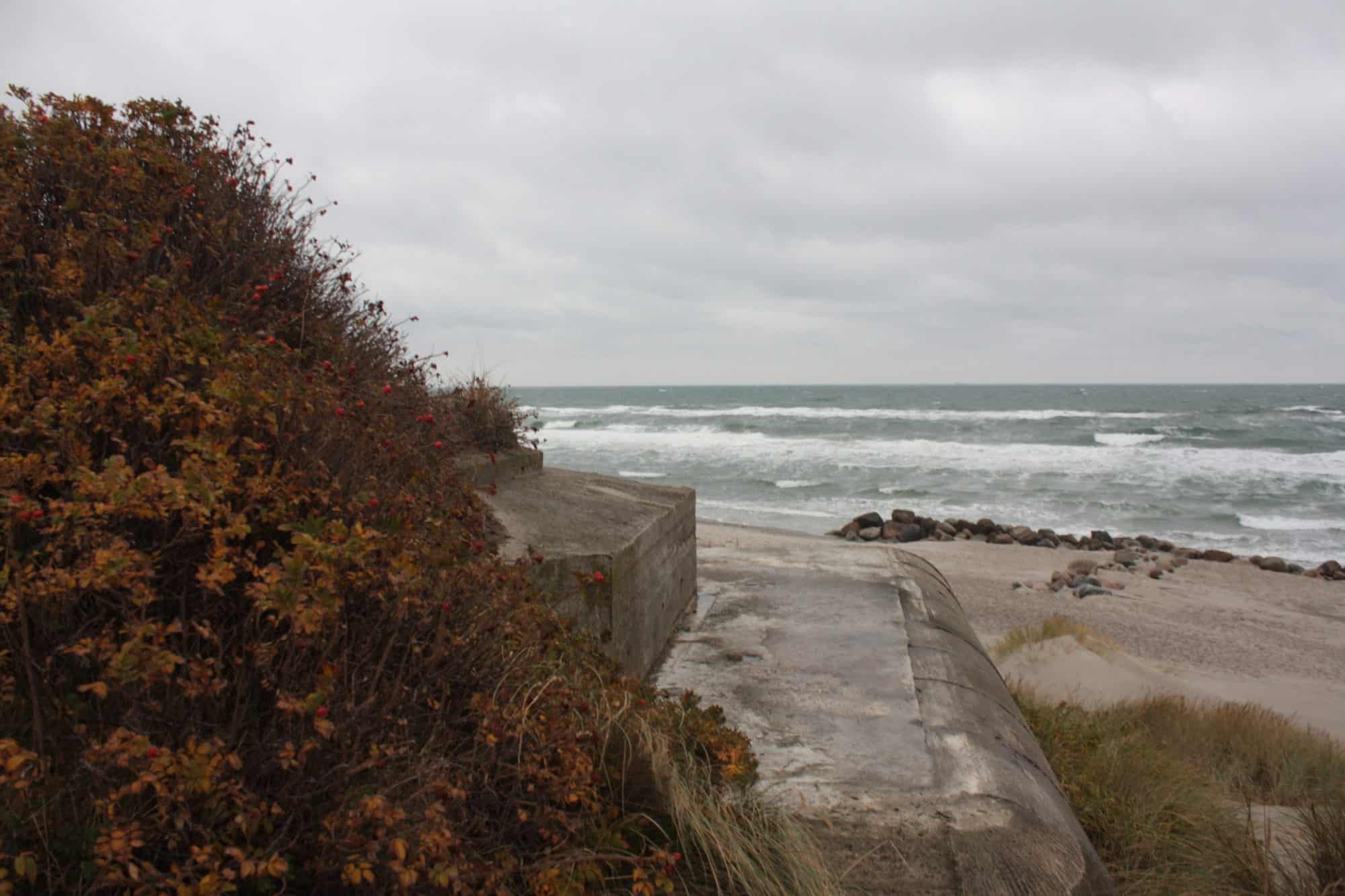
Visiting Skagen on a day trip from Göteborg is tough, but it’s so worth it. The ferry will take you to Frederikshavn for a very cheap price (if you’re not travelling by car), where you can take a train to the very north of Denmark. There, you can take the Sandormen (a tractor-slash-bus) to the place where Kattegat and Skagerrak meet and spot seals.
Skagen is also famous as the central city of the Skagen Painters (including Krøyer), whose paintings can be visited in Skagens Museum.
Last, but not least, you can also visit “den tilsandede kirke“, which literally translates to “the sand-covered church”. The only part of this church that is still visible today is its tower, while the rest of the building is covered in dune sand.
That was it from me. If you’re going to Göteborg soon, I’d love to hear from you on Twitter or Instagram, and I’m sure Margot would, too.
Once again, Margot, thank you so much for letting me use your insider tips and insights to create this guide for people who want to visit Göteborg.
Thanks for reading!
-S
PIN IT!
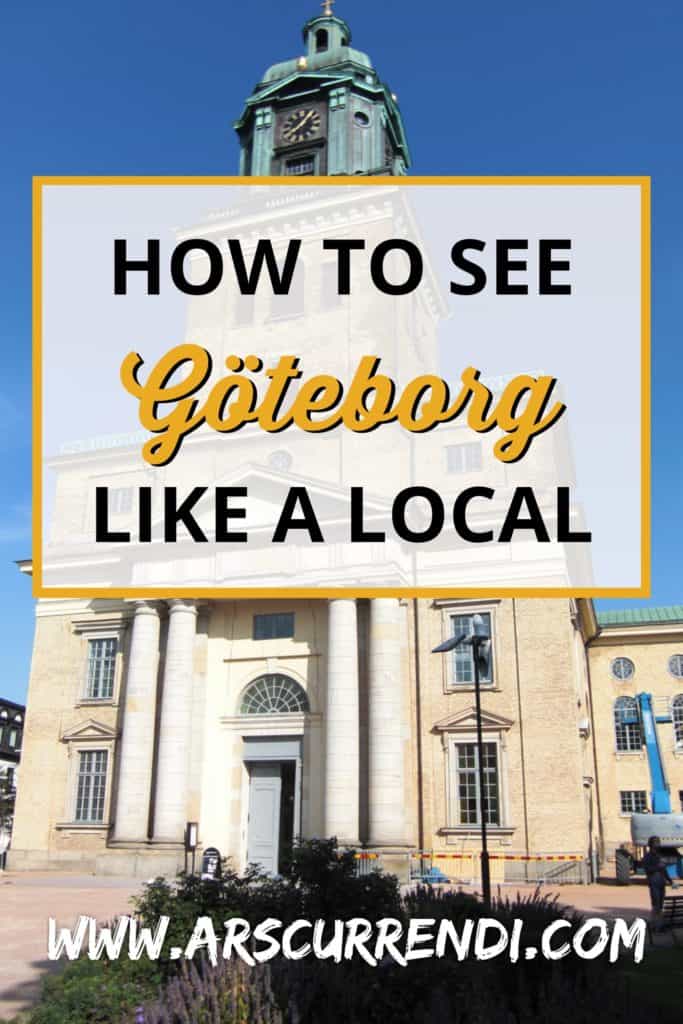
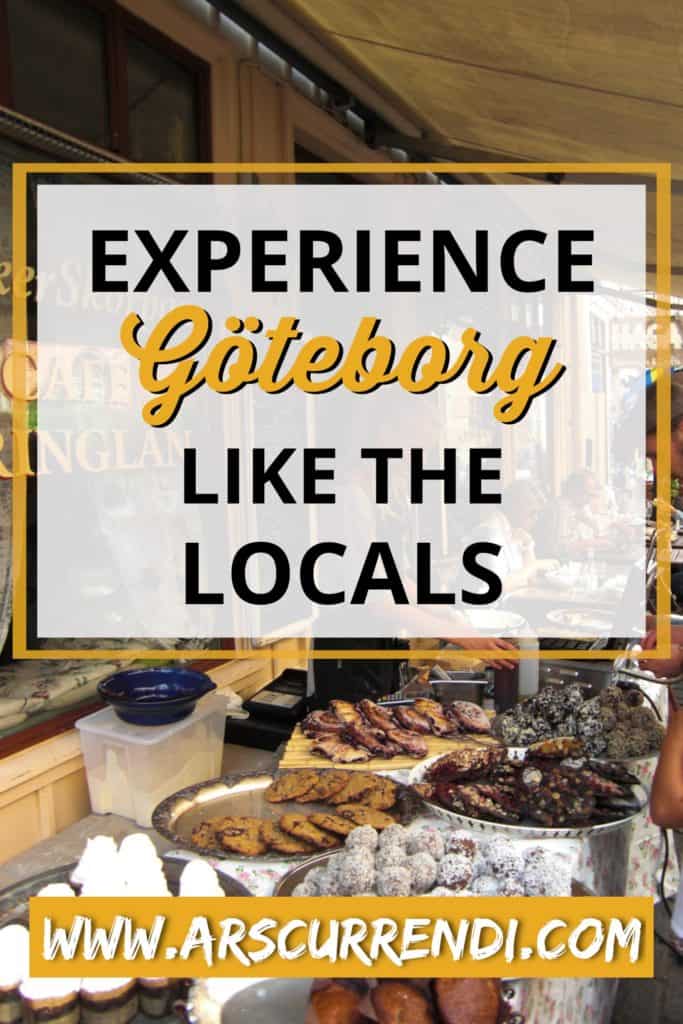
Design by NXNW.